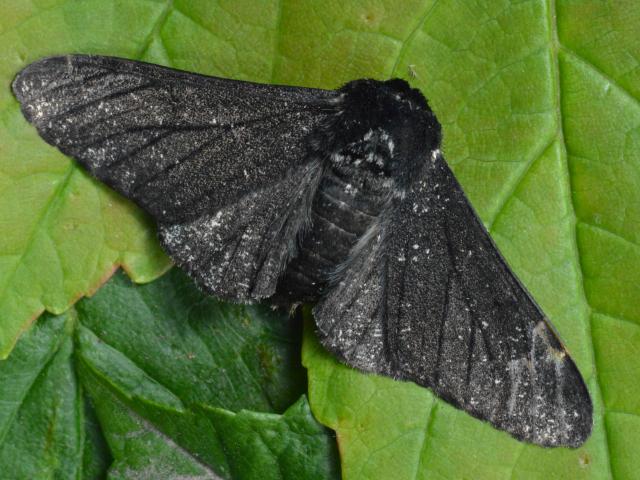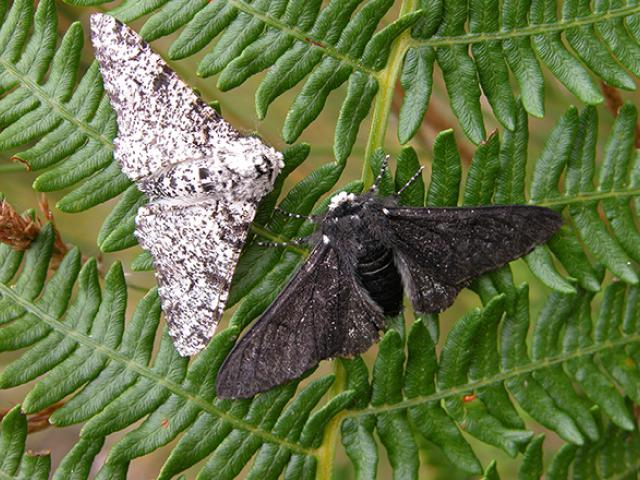The Peppered Moth is widespread in Britain and Ireland and frequently found in ordinary back gardens, yet its amazing story has made it famous all over the world. It is one of the best known examples of evolution by natural selection, Darwin's great discovery, and is often referred to as 'Darwin's moth'.
Peppered Moths are normally white with black speckles across the wings, giving it its name. This patterning makes it well camouflaged against lichen-covered tree trunks when it rests on them during the day.

There is also a naturally occurring genetic mutation, which causes some moths to have almost black wings. These black forms (called 'melanic') are not as well camouflaged on the lichen as normal 'peppered' forms, so they are more likely to be eaten by birds and other predators. This means that fewer black forms survive to breed, so they are less common in the population than the paler peppered forms. This is the normal situation observed in the countryside of Britain and Ireland.
However, in the nineteenth century it was noticed that in towns and cities it was actually the black form of the moth that was more common than the pale peppered form. Industrialisation and domestic coal fires had caused sooty air pollution, which had killed off lichens and blackened urban tree trunks and walls. So, it was now the pale form of the moth that was more obvious to predators, while the melanic form was better camouflaged and more likely to survive and produce offspring. As a result, over successive generations, the black moths came to outnumber the pale forms in our towns and cities.

Since moths are short-lived, this evolution by natural selection happened quite quickly. For example, the first black Peppered Moth was recorded in Manchester in 1848 and by 1895, 98% of Peppered Moths in the city were black.
In the mid-twentieth century, controls were introduced to reduce air pollution and, as the air quality improved, tree trunks became cleaner and lichen growth increased. Once again, the normal pale Peppered Moths were camouflaged and the black forms were more noticeable. Now the situation in urban areas has again become the same as in the countryside, with normal pale Peppered Moths being far more common than the black forms. So, natural selection has been seen to work in both directions, always favouring the moth that is best suited to the environmental conditions. The same thing has been observed throughout Europe and the USA.
Sadly, having adapted so well to survive the earlier ravages of industrialisation, this species is now declining overall. Between 1968 and 2002 numbers of the Peppered Moth in Britain fell by almost two thirds, although the causes are as yet unknown.

